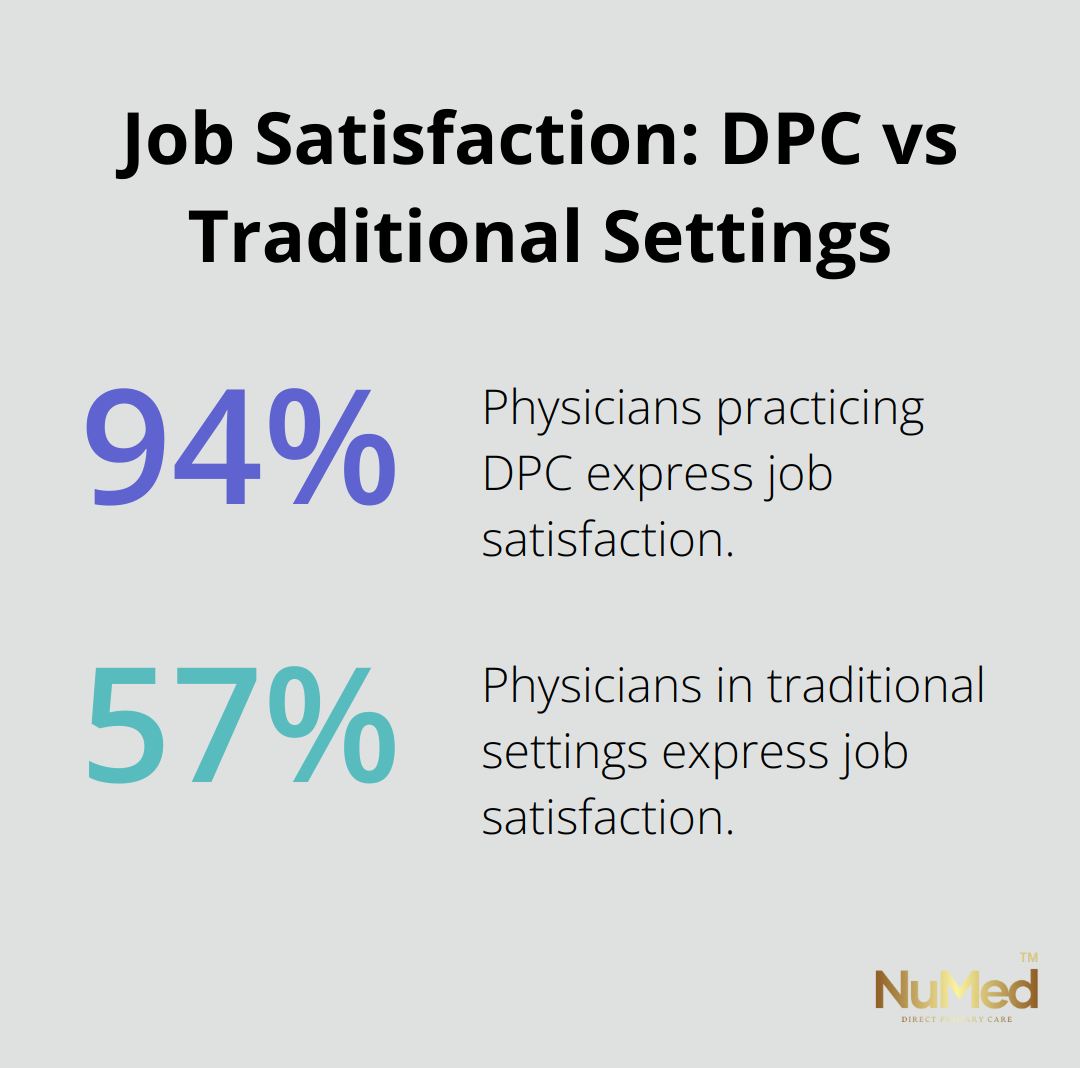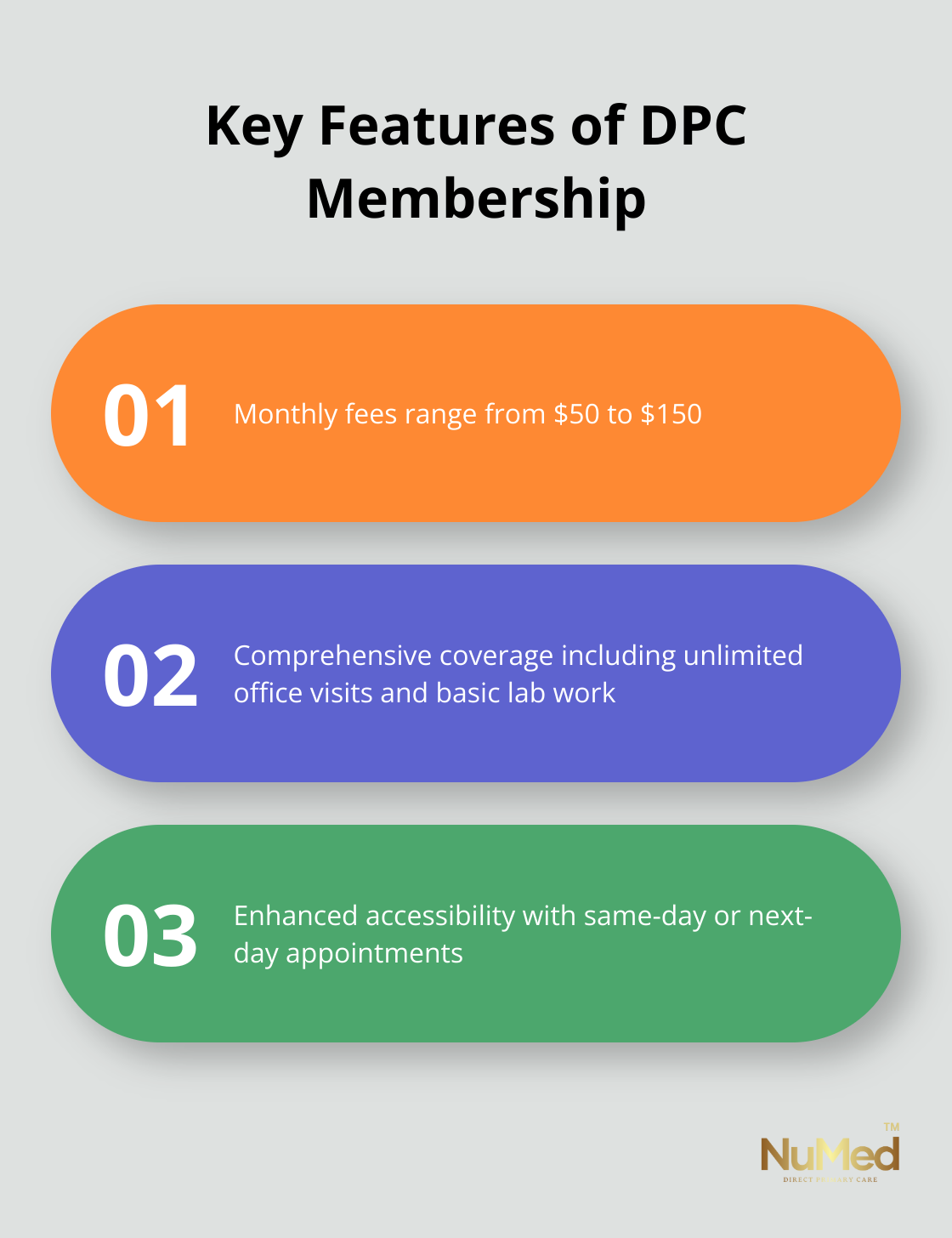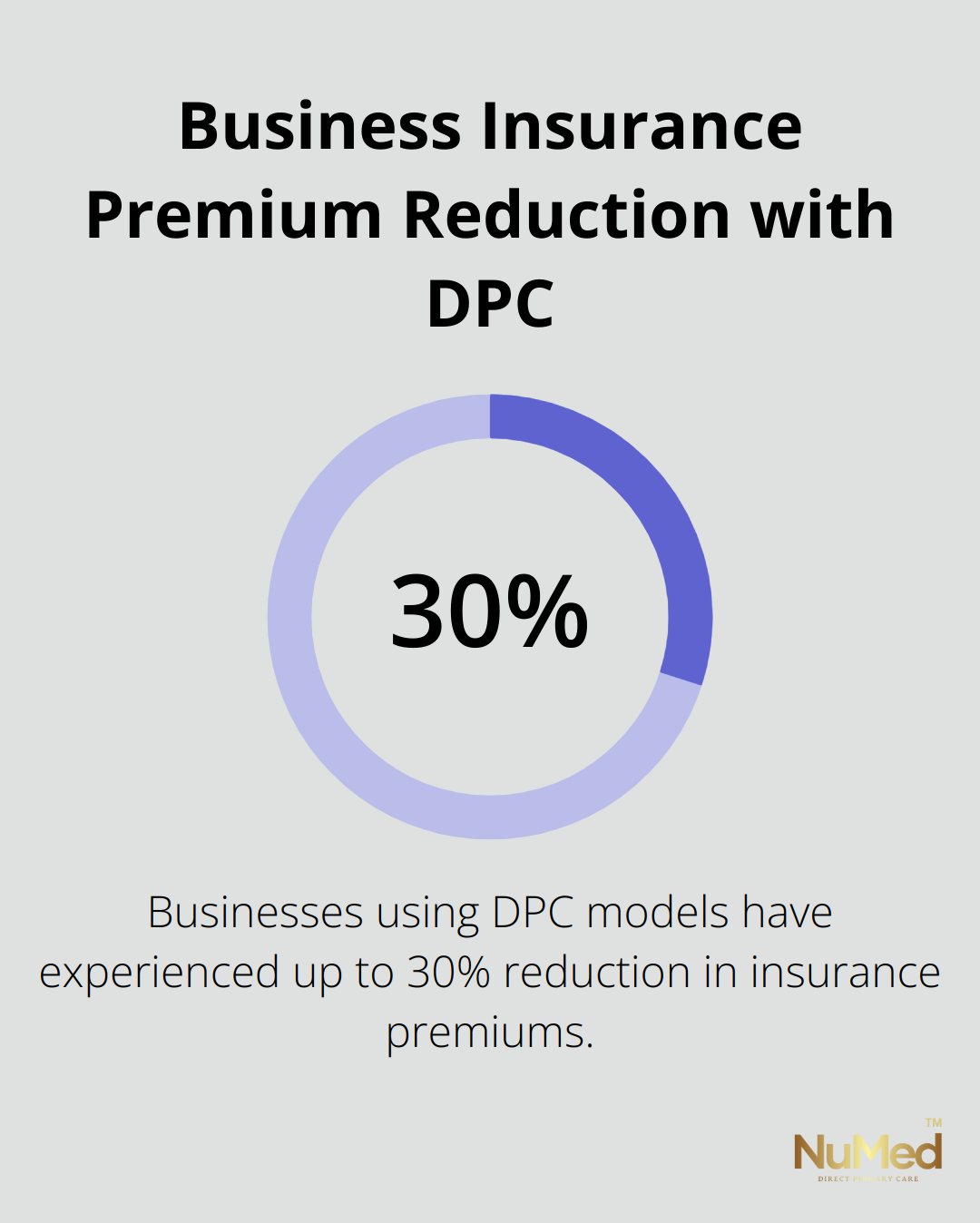At NuMed DPC, we often get asked, “What is a Direct Primary Care practice?” It’s a healthcare model that’s changing the way people think about primary care.
Direct Primary Care (DPC) offers a more personalized approach to healthcare, with a focus on preventive care and improved doctor-patient relationships.
In this post, we’ll explore the key features of DPC and how it differs from traditional primary care models.
What Is Direct Primary Care?
The Essence of DPC
Direct Care revolutionizes healthcare by eliminating intermediaries. This model fosters a direct relationship between patients and their primary care physicians. DPC prioritizes strong, personal connections between you and your doctor.
The DPC Model in Action
In a DPC practice, patients pay their healthcare provider a monthly or annual fee. This fee covers most primary care services (including office visits, basic lab work, and some procedures). Patients avoid insurance complications for these services, which means no co-pays, deductibles, or unexpected bills.
Contrasting DPC with Traditional Care
Traditional primary care often feels impersonal and rushed. Doctors in these settings see numerous patients daily, often spending more time on administrative tasks than patient care. DPC transforms this approach. With smaller patient panels, DPC doctors offer longer appointments, same-day or next-day visits, and direct communication via phone, email, or text.
Positive Outcomes for Patients and Providers
DPC leads to more personalized care and improved health outcomes for patients. Patients also report higher satisfaction rates due to improved access to their doctors.
Healthcare providers also reap benefits from the DPC model. The American Academy of Family Physicians reports that 94% of physicians practicing DPC express job satisfaction, compared to just 57% in traditional settings. With reduced administrative burdens, doctors can focus on their primary passion: helping patients.

Comprehensive Care Approach
DPC practices often provide a wide range of services tailored to individual patient needs. These services may include extensive lab work, functional medicine approaches, and preventive care strategies. By addressing root causes and nurturing genuine doctor-patient relationships, DPC practices don’t just treat symptoms – they promote long-term health and well-being.
As we explore the DPC model further, let’s examine the typical membership structure and services offered in these innovative practices.
How Does DPC Membership Work?
Membership Structure
Direct Primary Care (DPC) practices typically operate on a monthly fee basis. These fees range from $50 to $150 per month, depending on the practice and location. This straightforward pricing model eliminates the need for complex insurance billing and provides patients with clear, predictable healthcare costs.
Comprehensive Coverage
The monthly fee covers a wide range of primary care services. These services usually include:
- Unlimited office visits
- Annual wellness exams
- Routine preventive care
- Basic lab work (blood tests, urinalysis)
Some DPC practices (like NuMed DPC) offer additional services such as extensive lab testing and functional medicine approaches as part of their membership package.
Additional Services and Costs
While most primary care needs fall under the monthly fee, some services may incur extra costs. These could include:
- Specialized tests
- Certain procedures
- Medications
However, DPC practices often negotiate discounted rates for these services and pass the savings on to their patients.

Enhanced Accessibility
DPC practices prioritize patient access to healthcare providers. Most offer same-day or next-day appointments, ensuring patients receive timely care when needed. This quick access can prevent minor health issues from escalating into more serious problems.
Improved Communication
Communication between patients and doctors improves significantly in the DPC model. Patients often have direct access to their doctor via phone, email, or text.
This enhanced communication not only boosts patient satisfaction but also contributes to better health outcomes. Patients can quickly address their concerns and receive prompt medical advice, leading to more effective and efficient healthcare management.
The DPC membership model transforms the traditional healthcare experience, offering patients a more personalized, accessible, and comprehensive approach to primary care. This innovative model sets the stage for exploring the numerous advantages that Direct Primary Care brings to both patients and healthcare providers.
Why Direct Primary Care Transforms Healthcare
Direct Primary Care (DPC) revolutionizes the healthcare landscape, offering numerous advantages that benefit patients and healthcare providers. This innovative model addresses many pain points in traditional healthcare systems, creating a more efficient, effective, and satisfying experience for all involved.
Tailored Care for Better Outcomes
DPC practices excel at providing personalized care. With smaller patient panels, doctors spend more time understanding each patient’s unique health profile. This in-depth knowledge allows for more accurate diagnoses and tailored treatment plans. A study of adult patients receiving care at outpatient Integrative Health Medicine (IHM) clinics, which share similarities with DPC practices, demonstrated the potential benefits of personalized care approaches.
Financial Relief and Clarity
One of the most significant advantages of DPC is the financial transparency it offers. Patients know exactly what they pay for, without the surprise bills that often come with traditional healthcare models. Reports indicate that businesses using DPC models have experienced up to a 30% reduction in insurance premiums due to the shift in primary care responsibilities.

Stronger Doctor-Patient Bonds
The DPC model fosters stronger relationships between doctors and patients. With more time for each appointment, doctors truly listen to their patients’ concerns and provide comprehensive care. This improved communication leads to better health outcomes.
Streamlined Operations for Providers
For healthcare providers, DPC offers a reprieve from the administrative burdens that often plague traditional practices. By eliminating the complexities of insurance billing, doctors focus more on patient care.
Comprehensive and Preventive Approach
DPC practices often adopt a more comprehensive and preventive approach to healthcare. They try to address the root causes of health issues rather than just treating symptoms. This approach can lead to better long-term health outcomes and reduced healthcare costs over time.
Final Thoughts
Direct Primary Care (DPC) transforms healthcare delivery by addressing challenges in traditional primary care models. DPC practices offer personalized care, financial transparency, and improved doctor-patient relationships. Patients enjoy comprehensive care with longer appointments and direct access to physicians, while healthcare providers focus more on patient care due to reduced administrative burdens.
DPC has the potential to shift healthcare towards more preventive and personalized care across the system. This approach may lead to improved health outcomes and reduced healthcare costs in the long term. Those considering a Direct Primary Care practice should evaluate their healthcare needs and preferences to determine if this unique approach aligns with their goals.
At NuMed Direct Primary Care, we strive to embody the principles of what a Direct Primary Care practice should be. Our approach focuses on preventing illness, offering extensive lab services, and providing accessible support with transparent pricing. We encourage you to explore DPC as an innovative option for your healthcare needs.
















